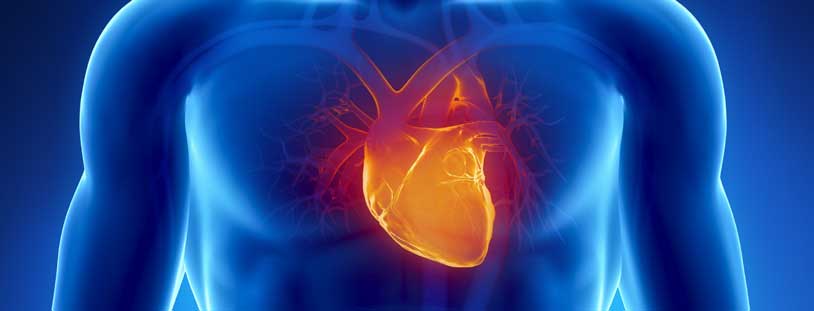Heart diseases
Heart disease is a broad term used to describe a range of diseases that affect your heart. The various diseases that fall under the umbrella of heart disease include diseases of your blood vessels, such as coronary artery disease; heart rhythm problems (arrhythmias); heart infections; and heart defects you’re born with (congenital heart defects).

Coronary atherosclerosis
The most common form of heart diseases is also called coronary heart disease. In order for the heart to function properly, it needs a supply of oxygen and nutrients which is obtained from the blood flowing to it in the coronary arteries.
Various factors, including smoking and high blood cholesterol, cause coronary artery stenosis (narrowing) and partial occlusion of the blood flow inside them. Consequently, part of the myocardium (heart muscle) does not receive enough oxygen and nutrients.
Heart attack
Coronary atherosclerosis may also suddenly cause full occlusion of the artery by a blood clot. This condition is called myocardial infarction (a heart attack). In the event of a heart attack, the cells in the myocardial section deprived of blood supply die within a few minutes, thus impairing cardiac function. Both the location and the size of the infarct are affected by the location of arterial stenosis or occlusion.
Look into your heart – are you maintaining a healthy lifestyle
It is true that you cannot prevent all the risk factors of heart disease (such as age, gender, diabetes and genetics), but you definitely can prevent many of them.
In order to find out how to reduce your risk of developing heart disease,
it is important to learn about the risk factors that hasten the development of the disease:
Smoking
The most significant risk factor for heart attack at any age. Smoking clearly accelerates the pace of development of atherosclerosis, causes damage to various organs and increases the risk of stroke and cancer. (Please take note: even after years of smoking, the body can still cleanse itself. The risk of heart disease declines by about 50% after the first year since quitting smoking, and after 5-15 years, the risk is the same as that of a person who never smoked).
Cholesterol
Cholesterol is a fatty substance required by our body for normal functioning. However, too high a level of LDL-cholesterol (the “bad cholesterol”) in the body is a risk factor for developing atherosclerosis: cholesterol deposits form in the arterial wall, which may lead to arterial stenosis, and even to myocardial infarction.
Physical activity
Regular physical activity strengthens the myocardium, and helps to lower blood pressure, promotes weight loss and relieves stress, and even increases the level of HDL- cholesterol (the “good cholesterol”, which helps us to minimize the effect of LDL- cholesterol (the “bad cholesterol”).
Lack of physical activity increases the risk of heart diseases, high cholesterol and hypertension.
Medical Tourism
We offers foreign citizens the opportunity
to get medical treatments at the best
facilities, by the most professional
doctors in Israel
Medical Departments
We offers foreign citizens the opportunity
to get medical treatments at
the best facilities, by the most professional doctors in Israel
